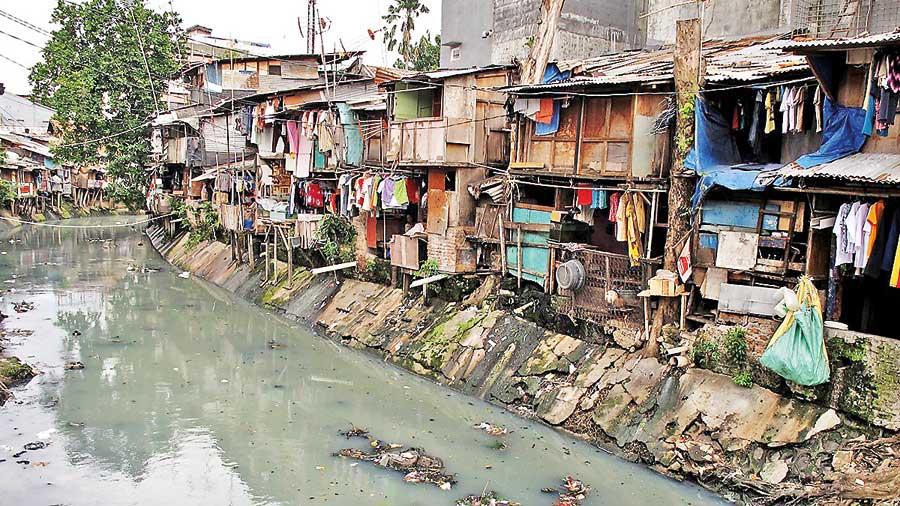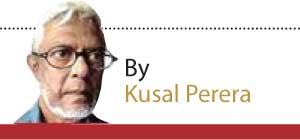Reply To:
Name - Reply Comment

Presidential aspirants from all shades and shapes on political and apolitical platforms promise a ‘Prosperous, corruption-free Sri Lanka’ when elected.
That is the most common single slogan, all have accepted without contradictions and deviations. The other common factor among them all is, none has any serious programme to provide answers to major issues the country is facing now, but all have rhetoric.
They have all, apparently not paid due attention to the serious crisis in education, raised in my previous DM article as a challenge to them all.
The article on July 12 titled ‘Open challenge to all aspiring Presidential Candidates’ provided official data that showed how exclusive education was and how poverty was reflected in our education system across the country. Poverty nevertheless is grossly misinterpreted and misrepresented and is used for political advantage.
How presidential aspirants promising a prosperous, corruption-free country answer these issues on poverty alleviation is therefore extremely important.
Two years into Yahapalanaya, the 2017 Performance Reportof the Samurdi Department starts by saying its vision is: 
“To be the premier organisation in making a poverty-free, empowered and prosperous Sri Lankaby 2030.”
That’s over 12 years from when the ‘performance’ report was done and with two more terms for the next government.
We had spent over 29 years promising to alleviate poverty since President Premadasa, determined in raising the standard of rural life brought his pet project as Janasaviya in April 1990. Janasaviya was activated in October 1990. It was for 05 years. I then had the privilege of interviewing Susil Siriwardana about Janasaviya for the Sinhala periodical ‘Vivarana.’ Siriwardana was Director-General of the Janasaviya Trust Fund (JTF) and one of the leading personalities in conceptualising the Janasaviya programme.
In summary, his explanation said, Janasaviya was designed as a people-based development process driven with people’s active participation from recipient selection to implementation.
Poverty alleviation was geared to community entrepreneurial groups that would create value addition to resources in their areas facilitated by JTF with necessary guidance, skill development and market linkages. In a district, or even in a province Siriwardana said, similar community groups could join in forming a larger entity capable of securing more investments that could provide more employment and better living standards in the area.
Selection of Janasaviya Recipients was by villagers who were allowed to oppose or propose recipients with valid reasons at village meetings, before finalising the list. It was an extremely democratic, transparent and a participatory approach that left politics totally out of Janasaviya.
This, while everything else was being politicised, right down to the bottom of the State. Efforts to have the Janasaviya outside political influence became a major issue for conflicts in most districts.
UNP politicians wanted a hand in selecting recipients. President Premadasa, whose political authority was being challenged by then within the UNP caved in to pressure from MPs. Although funded by the German Government (USD 10 million) and by World Bank (USD 57 million), Janasaviya was gradually derailed and was politicised leaving all good things that Siriwardana spoke about, on the wayside.
Janasaviya thereafter was further politicised after the Chandrika Kumaratunga Government was voted to power in 1994. It was re-designed as Samurdi in 1995. To cut short a long story that today is about massive corruption with a huge bureaucracy, Samurdi today is a department labelled as ‘Divi Neguma’ the Rajapaksas used as an election campaign tool.
It is about this Yahapalanaya Government also using it for political advantage with increasing allocations and with increasing numbers of Samurdi recipients. All this with no clear definition of what poverty is.
The general understanding is, a person without an adequate minimum income to meet the most basic needs of day-to-day living, is poor. That in general context means poverty. Income level below which basic needs cannot be met adequately is decided as the poverty line. It is a dubious bureaucratic practise in working out the poverty line that allows political justification of poverty alleviation.
That too in a weird economy which is fundamentally megacity centric. Do presidential aspirants know how poverty in Sri Lanka was reduced from 26.4 per cent in 1990 when Janasaviya was begun, to 4.1 per cent in 2016? These numbers are used to justify this extremely-exploitative free market economy.
The Census and Statistics Department says;
“Because of the high demand on poverty indices, in 1990, a survey was designed mainly to collect data required for estimating the indices related to poverty and food consumption patterns.”
This is known as the Household Income and Expenditure Survey(HIES). But there is no explanation about what is related to poverty. No explanation of why the labour force survey previously used is left out.
Two things were changed in conducting HIES; one is employment and the other is the minimum income.
In HIES, employment is counted as economically-active during the week the survey is conducted. Economically-active is a very vague term. It is certainly not about an “08-hour working day” job.
Unemployed numbers thus came tumbling down magically. Minimum income for survival was decided to contradict HIES findings. Reduced poverty numbers in Sri Lanka though irrelevant in real life is used to say this free market economy is a development economy.
Will presidential aspirants explain how it could be so, with these numbers?
- Poverty alleviation and the poor are used as vote hunting tools
- Presidential candidates are not serious about poverty alleviation
- Started as Janasaviya, its mechanism is used under various labels by various parties
The national ‘poverty line’ was decided as Rs.4,856 in June this year, while in 06 districts including Colombo (Rs.5,272) it was above Rs.5,031. This means a family of 04 (a household) with both parents earning Rs.9,000 per month (wife not counted as earning the same as husband) are not poor. They are above the poverty line. Yet, the HIES in 2016 has found the average national household expenditure as Rs.54,999 per month and that is the minimum needed for school education, health (not private care), food and non-food expenses, durable goods and debts, the cost in accessing facilities in the area and housing.
It varies from province to province and district to district with Colomboneeding Rs.90,670 in 2016, up from Rs.63,030 in 2012. The lowest is Kilinochchi with Rs.28,483 in 2016 fallen from Rs.32,992 in 2012, which is unexplainable compared to the adjacent district Mullaitivu that went up from Rs.20,581 in 2012 to Rs.32,576 in 2016. No household with Rs.9,000 and above the poverty line now, would survive even in Kilinochchi. How will presidential aspirants explain this jumble in numbers?
Here is another jumble. Total Samurdi beneficiary families in January this year was 1.39 million according to the official web site accessed on July 15, 2019. In his budget speech in March this year, Finance Minister Mangala Samaraweera said there were 900,000 beneficiary families, less 490,000 than what the ministry website gave. Now, which number is correct? The finance minister proposed to include 600,000 more “deserving households” that would on the ministry website numbers, make the total number of beneficiary families almost 02 million. In Sri Lanka, there are 05 million households. Of them, if 02 million, that is 40 per cent households, are Samurdi beneficiaries, poverty can never be 4.6 per cent of the population as Census and Statistics Department computes.
With all this jugglery with numbers, Samurdi cost taxpayers, Rs. 42 billion last year. If one adds up all the money taxpayers have been paying as Samurdi benefits and for their maintenance, it could be thousands of trillions in rupees over the past two and a half decades. What is the outcome?
Beneficiaries seem to be increasing with a giant bureaucratic structure that totalled 25,794 employees according to the 2017 Performance Report of the Samurdi Development Department.
Whole poverty alleviation business with Rs.42 billion paid in a year as subsidies and benefits while maintaining a giant staff of over 25,700 to attend to almost two million poor households is miserable, never-ending political fraud played out on people with no questioning in society.
It has also led to massive corruption. In a special report in April 2019, the Auditor General (AG) highlighted a Rs.108 million fraud from 2014 to 2016 in 63 Divineguma Community based banks.
During that same period, another 25 such banks have been into fraud the AG report says. The report also says, “It has been revealed that financial fraud is committed annually in Community Based Banking and Banking Society Systems. However, investigations have been conducted in a sluggish manner” while noting Rs.12 million has been misappropriated in 12 such other banks.
The mega question that remains unanswered is, how can poverty alleviation be a reality in this manner? Poverty alleviation should be an entrenched factor in a development programme.
It is about improvement in the quality of life and not merely economic growth with huge disparities. What do these presidential aspirants have upon their sleeves in the answer? How can they honour their promise of a Prosperous, corruption-free Sri Lanka without solutions to poverty alleviation?
With no serious answers to the major crisis in education, these presidential aspirants if with no answers for poverty alleviation also would only mean they are dud coin-candidates not worth a vote at the next Presidential Election. It thus means, we would have to push for serious far-reaching reforms instead of running around in search of the “best” of the bad lot of candidates. So, there we are with poverty.